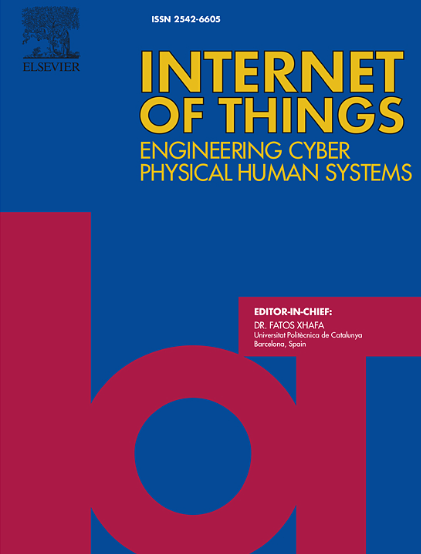Collaborative edge learning-assisted interactive avatar generation framework for IoT-driven metaverse
IF 7.6
3区 计算机科学
Q1 COMPUTER SCIENCE, INFORMATION SYSTEMS
引用次数: 0
Abstract
The Beyond 5G (B5G) wireless networks offer massive Internet of Things (IoT) integration with metaverse services, leveraging high data rates and low latency capabilities. Avatars are essential components in the metaverse platform. Creating an interactive avatar that utilizes IoT-based human pose estimation by utilizing centralized deep learning (DL) poses significant challenges. Federated learning (FL) offers a solution by enabling local training on edge devices and collaboratively producing a reliable model. This study proposes edge learning-assisted human activity recognition (HAR) using the FL technique and integrates it with an IoT-driven intelligent metaverse platform to create an interactive avatar. The HAR framework captures human gestures using infrared array sensor devices and recognizes activities with a lightweight hybrid model called AvatarNet. An enhanced data distribution and reputation-aware (iDDR) client selection scenario is implemented to identify potential clients and improve model performance. Furthermore, a connection module based on JavaScript and the WebSocket protocol has been developed to integrate the HAR framework with the Unreal Engine (UE) metaverse platform. The proposed model was tested using our infrared-based HAR and public datasets, outperforming state-of-the-art in accuracy and model complexity. The measurements show that the proposed model achieves an accuracy of 96.49%, precision of 94.84%, recall of 94.78%, F1 score of 94.80%, and MFLOPs calculation of 0.0431.
协作边缘学习辅助交互式头像生成框架,用于物联网驱动的虚拟世界
超越5G (B5G)无线网络提供与元宇宙服务的大规模物联网(IoT)集成,利用高数据速率和低延迟功能。化身是虚拟世界平台的重要组成部分。通过集中式深度学习(DL)创建一个利用基于物联网的人体姿势估计的交互式化身,这是一个重大挑战。联邦学习(FL)提供了一种解决方案,它支持在边缘设备上进行本地训练,并协作生成可靠的模型。本研究提出了使用FL技术的边缘学习辅助人类活动识别(HAR),并将其与物联网驱动的智能元宇宙平台集成,以创建交互式化身。HAR框架使用红外阵列传感器设备捕捉人类手势,并使用名为AvatarNet的轻量级混合模型识别活动。实现了一个增强的数据分布和声誉感知(iDDR)客户端选择场景,以识别潜在客户端并提高模型性能。在此基础上,开发了基于JavaScript和WebSocket协议的连接模块,实现了HAR框架与虚幻引擎(Unreal Engine, UE)元世界平台的集成。使用我们基于红外的HAR和公共数据集对所提出的模型进行了测试,在准确性和模型复杂性方面优于最先进的技术。实验结果表明,该模型的准确率为96.49%,精密度为94.84%,召回率为94.78%,F1分数为94.80%,MFLOPs计算值为0.0431。
本文章由计算机程序翻译,如有差异,请以英文原文为准。
求助全文
约1分钟内获得全文
求助全文
来源期刊

Internet of Things
Multiple-
CiteScore
3.60
自引率
5.10%
发文量
115
审稿时长
37 days
期刊介绍:
Internet of Things; Engineering Cyber Physical Human Systems is a comprehensive journal encouraging cross collaboration between researchers, engineers and practitioners in the field of IoT & Cyber Physical Human Systems. The journal offers a unique platform to exchange scientific information on the entire breadth of technology, science, and societal applications of the IoT.
The journal will place a high priority on timely publication, and provide a home for high quality.
Furthermore, IOT is interested in publishing topical Special Issues on any aspect of IOT.
 求助内容:
求助内容: 应助结果提醒方式:
应助结果提醒方式:


